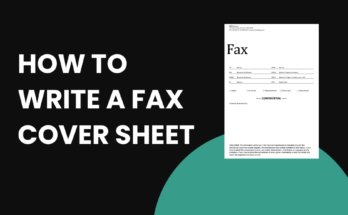The commercial proposal is a document in which the client will have all the information about the product or service they wish to purchase, including delivery times, scope of work, values and forms of payment.
The path to conquer a new customer for your business is not easy.
During this process, marketing professionals , vendors, and consumers go through some important stages, ranging from prospecting to contract signing.
Given these steps, the commercial proposal assumes a very important role. You must use the right project proposal template to give clarity of your goals to your clients.
It is through it that the client will have all the information about the product or service they wish to purchase – including delivery times, scope of work, values and forms of payment.
The commercial proposal acts as a call for the client to decide to contract the service or buy your company’s product.
Due to its importance, it is essential that the seller knows how to make a good document to attract new consumers and even to retain customers.
If you want to update your company’s sales, continue reading: we are going to present you with all the information you need to know to prepare a good commercial proposal .
Know the objective of the commercial proposal
Table of Contents
Before starting to develop the business proposal, it is essential that the sellers take a few minutes to review their true objective and what are the paths that will help them prepare a good document.
Knowing or even remembering what the proposal is for is very important, because in the daily business some aspects that make it different may end up being left out.
The goal of a good proposal is to match the customer’s need (known to the seller during the prospecting stage) with what the company has the best to offer.
Therefore, the use of standard proposals are not welcome, since they do not consider personalization on what the consumer is looking for, a factor that can destroy the effectiveness of the customer’s purchase.
How to make a commercial proposal
In the excitement of sending the proposal to the customer as soon as possible, the seller may forget crucial points that make the proposal more interesting for the consumer.
For this reason, it is recommended that before starting to write the document, the seller organize the materials that will help drive the proposal.
It is interesting to verify if you already have company letterhead, if the logo is in high resolution and if the graphs, tables and schedules produced in other programs – such as in Excel – are easy to insert into the proposal.
Thinking about the design before sketching the document is important, since it gives a professional air to the commercial proposal, which will surely awaken the attention of your prospect even more.
If the offer is delivered in print to the customer, it is necessary to invest in custom company folders to accommodate the document and also include company presentation materials, such as a folder.
Prepare the first stage of the proposal
An objective and well-organized commercial proposal will have a much better chance of being appreciated by the client.
This being the case, it is interesting to start this organization already in the first stage of the document, which includes the cover and the index.
On the cover, it is important to identify the contractor and the contracted one. For example:
- At the top of the folder, enter the name of the contracted: Company X.
- In the central part of the folder, include the name of the contractor: Proposal for company Y.
In addition to this information, it is necessary to insert the company logo in the header and the contact details of the seller and the company in the footer, if the company does not yet have a letterhead.
After that stage, it is time to outline the proposal index.
In it, the prospectus will present all the issues addressed in the course of the document, in a way that facilitates the location of the most important points.
In this phase, it will still be only an outline, since the page numbers will only be included after the proposal is finalized.
Develop the presentation of the product or service
As much as the client knows your product or service through meetings with the sales team and even through the research he did on the subject, the commercial proposal also serves to present the prospect with the functionalities you are offering, showing the benefits that the product or service provides you.
Therefore, it is important that during the presentation the seller includes personalized information for his prospect in the proposal, showing him that the negotiation meets his expectations and needs.
During the production of the content, the seller has to be careful to maintain clarity and avoid using very technical terms that can compromise the client’s understanding.
Share the job objective with the prospect
Another point that cannot be missed in a good commercial proposal is the work objective, mainly in a document oriented to the commercialization of a service.
At this stage, the seller exemplifies to the client how the deliveries of the works will be made and all the information regarding the number of hours spent and the number and level of professionals involved in the execution of the work.
In order for the information in the scope of work to be well organized and easy for prospects to understand, it is interesting for the salesperson to use scannability tactics , such as bullets points to present each topic and highlight the most important keywords in bold .
Includes information on the methodology adopted
After explaining the objective of the work, the seller needs to allocate a space in the commercial proposal to explain to the client what will be the methodology that the company will use to achieve the objectives presented in the document.
It is important to emphasize the techniques that will be used, software, programs and equipment that are worth highlighting and that are interesting to share with the prospect, showing that the company has all the necessary structure to offer the best.
Work schedule
It is common for customers to want immediate results when contracting a service or product.
It is essential, then, that sellers align these expectations well with the consumer already during the first encounters in the prospecting and record in the schedule presented in the commercial proposal.
Add tables or graphics to clearly show the client the dates on which each step of the contracted service will be carried out.
It is important that these dates are really possible to meet, because if the purpose is to impress the client to close a contract with your company, you may have many problems in the future. Clarity and sincerity must be the basis of any commercial proposal.
Values and forms of payment
This is perhaps the point most expected by customers, since the value charged is one of the most used decision factors by the contractor.
Instead of simply including a certain value in your business proposal, a suggestion is to create a table that has room for a brief summary of what is included in the value, the workload and the price, identifying if the value charged is per hour worked, monthly, quarterly, semi-annually, etc.
After presenting the values, the seller must include in topics the payment terms adopted by the company and also the validity of the commercial offer, which is generally 15 days after the date of shipment to the customer.
If the document is signed after the date, the values can be reviewed by the contracted company.
Rules and other conditions
Despite having a more bureaucratic nature, it is important to include in the commercial proposal possible rules and conditions that the contracted company uses in its work method, such as fines, additional charges in case of extra services, interest, service cancellation, among others .
There are companies that make the commercial proposal a contract, which leaves the document more extensive, but optimizes the start time of the work.
Template commercial proposal
Creating a business proposal is a long and detailed task. To help you with this mission, we created two editable templates : one in text format (Google Docs) and the other in presentation format (Google Slides).



